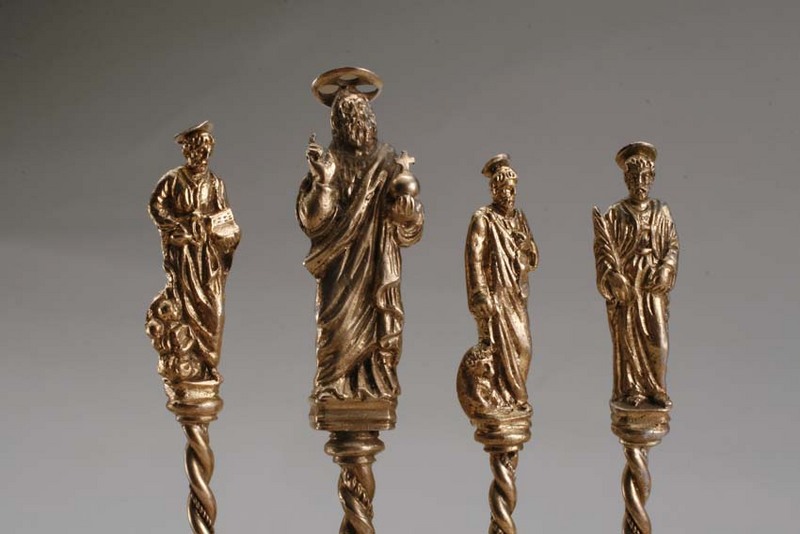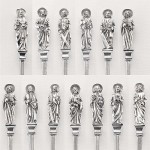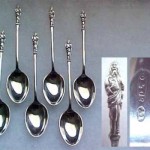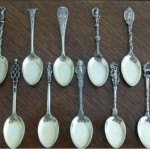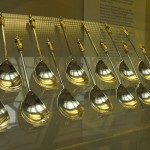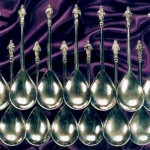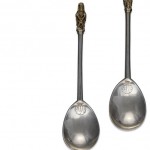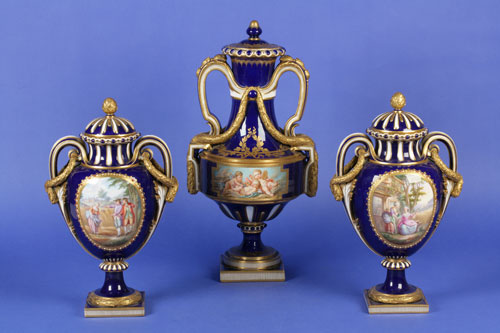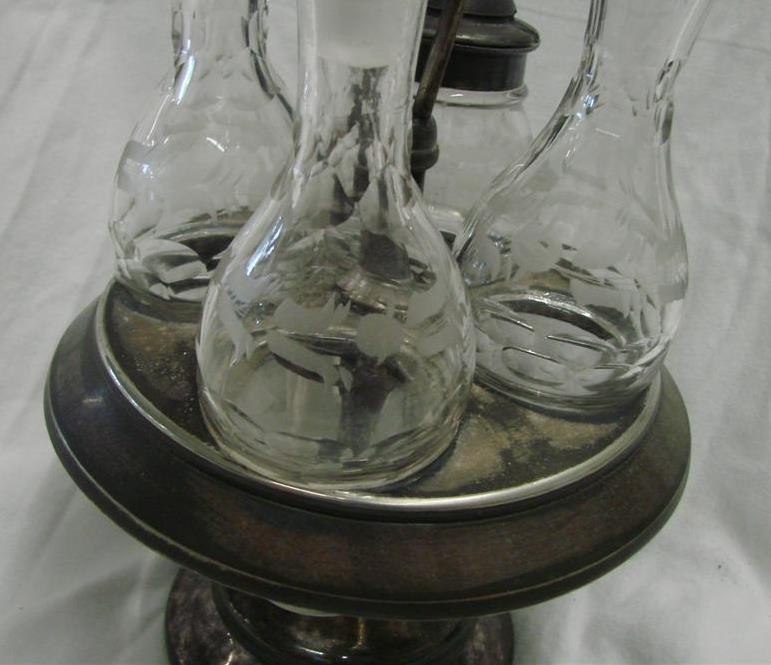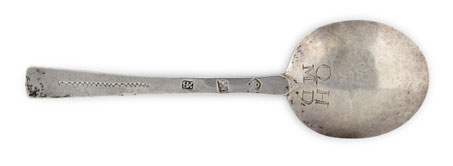The apostle spoon dates from the 15th Century, possibly even as early as the 14th Century, and continued to be made in large numbers until the mid 17th Century. On top of each apostle (except some very early examples) is a nimbus, i.e. a round halo or disc, often pierced or impressed with a depiction of the sacred dove.
Apostle spoons symbolize the Last Supper of Christ in the company of the Apostles. Apostle spoons were especially popular in England, but were also found in large numbers in Germany.
Undoubtedly it is the most well known and easily recognised of all the antique spoons with its distinctive finial. This is at the end of a spoon’s stem. Sometimes an applied cast figure such as the apostle on apostle spoons. The ideal set of apostle spoons numbers thirteen and includes the Master who would be Jesus.
The other twelve are of varying rareness and are:
St. Andrew, St. Bartholomew, St. James The Greater, St. James The Less, St. John, St. Jude, St. Matthias, St. Matthew, St. Paul, St. Philip, St. Simon Zelotes and St. Thomas.
Each apostle is recognised by the emblem he is carrying. St Paul and St. James are the most frequently encountered. This is probably due to St. Paul being the patron saint of London and popular as a christening gift to children.
In England in the sixteenth century wealthy gentry and merchants could afford to have silver items for their personal use. These would include domestic pieces for dining, such as spoons, flagons and cups, as well as items for religious use, such as chalices and patens. Some dining silver was decorated with religious motifs and inscriptions.
Apostle Spoons in the British Museum

